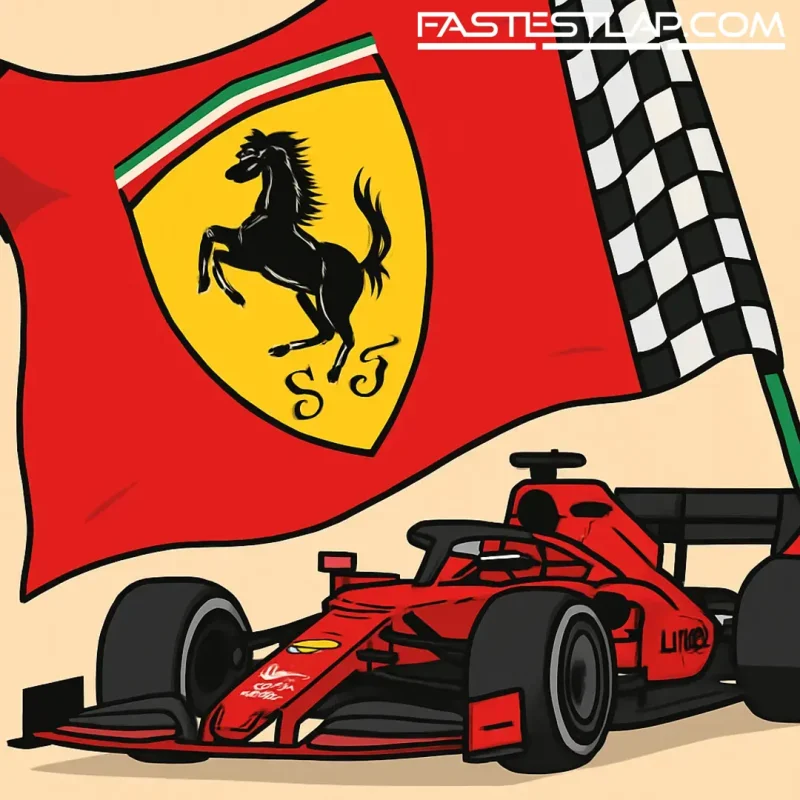Ferrari’s season drifts, and the old guard smells a vacuum
There’s a thread running through Ferrari’s faltering 2025 campaign that has nothing to do with downforce maps or suspension geometry. It’s leadership — or, as a pair of heavyweights from Ferrari’s past argue, the lack of it.
With six races left on the 2025 calendar, Ferrari is still winless. Only Charles Leclerc has stood on a podium. The Scuderia has slipped to third in the Constructors’ standings and, remarkably, now feels Red Bull’s breath on its neck despite the Milton Keynes outfit leaning almost entirely on one man, Max Verstappen. The past two rounds yielded nothing higher than P6 for Ferrari. That’s not a blip; that’s a drift.
Inside the paddock, the tone around Maranello has shifted from “when” to “why.” Sky Italia’s Mara Sangiorgio summed up the on-track picture bluntly: this year’s red car was “born without any strong points,” and even a suspension rethink hasn’t put it back in the fight against rivals who’ve kept developing and, crucially, extracting performance when it matters.
You can see it in the results ticker. McLaren set the bar early. Red Bull then landed back-to-back wins in Monza and Baku. George Russell pinched Singapore for Mercedes. Ferrari? Still waiting for a Sunday that sticks.
But Alessandro Benetton — the former Benetton chairman whose team once helped redefine F1’s balance of power — says the problem runs deeper than a temperamental chassis. It’s cultural. It’s human.
“It happens in companies that the desire to move forward stops and growth stops, but there must always be someone who can stand out and make a difference and inspire the team,” he told Italian TV. “I think that during change, companies must identify leaders capable of making a difference. I don’t have one in mind for Ferrari, but they are important figures who must inspire the team.”
That’s a loaded comment in any context. At Ferrari, it’s a grenade. And it didn’t explode alone.
Luca di Montezemolo — who knows a thing or two about how Ferrari wins and why it stops — added his own thunder at the premiere of Luca: Seeing Red. “Today, Ferrari lacks a leader,” he said. “Today, there is no leadership, and above all, there is no soul. I don’t know Vasseur, and I’m not criticising him, but I see an isolated man. There have been too many changes, the team needs stability. Today, there is a lack of a leader, a strong and determined soul.”
Fred Vasseur is the man on the pit wall, John Elkann the chairman. Their strategy this year has been pragmatic: with sweeping 2026 regulations on the horizon, Ferrari diverted resources toward the new era. That’s the rationale Lewis Hamilton, now dressed in red, nodded to when he lamented the lack of meaningful upgrades through the heart of this season. It’s a defensible plan if you’re banking on a step-change under the next rulebook. It’s a maddening one when your rivals keep winning in the meantime.
And that’s the paradox. Ferrari’s engine group has long been confident about 2026. The team’s vehicle dynamics department has been rebuilt. The driver lineup is as potent as it gets on paper. Yet 2025 has exposed a familiar vulnerability: when the development race accelerates, Ferrari often can’t, or won’t, match the cadence.
If you strip the emotion out of it, the Scuderia’s year looks like a case study in trade-offs. The 2025 car’s window is narrow, and the team hasn’t consistently hit it. The correlation gains that appeared in testing never translated into a stable upgrade path. The pit wall has been tidier, the operations cleaner, but there’s been nothing to roll the field back. That’s how you end up nibbling for P6 while the silver and papaya cars dice for wins.
What stings — and why the critiques from Benetton and Montezemolo matter — is that Ferrari’s DNA has always been bigger than a spreadsheet. When the place hums, it hums because there’s a clear voice at the center and a united engineering vision beneath it. When it doesn’t, you see what you’re seeing now: shoulders slack, a car without a calling card, and a season that feels longer with every flyaway.
None of this means 2026 is doomed. It does mean the rest of 2025 has to be used for more than lab work. Ferrari needs to choose what 2026 Ferrari looks and feels like — not just in the tunnel, but in the room. Who makes the calls? Who owns the concept? Who pulls the team through the rough weekends when the stopwatch won’t budge? Those are leadership questions as much as technical ones, and the calendar isn’t pausing while they’re answered.
Leclerc has carried the scoring load. Hamilton’s experience was meant to raise the floor on Sundays. Both can still change the mood if Ferrari can find a late-season setup sweet spot. A podium streak would silence a lot of noise; one win would change all of it.
But if the victories don’t come, the message from the grandee voices is clear: Ferrari can’t simply outwait this. It has to outlead it.




